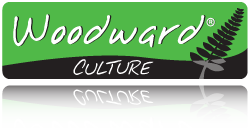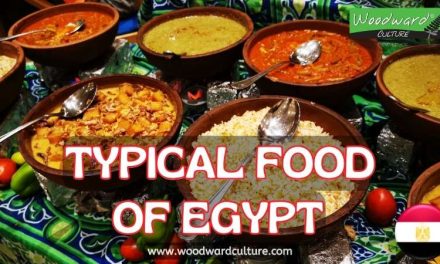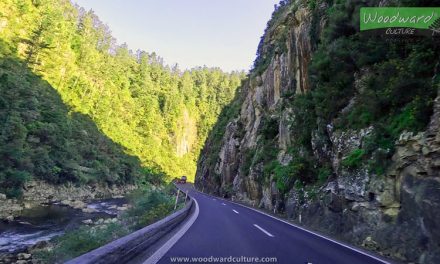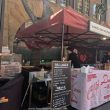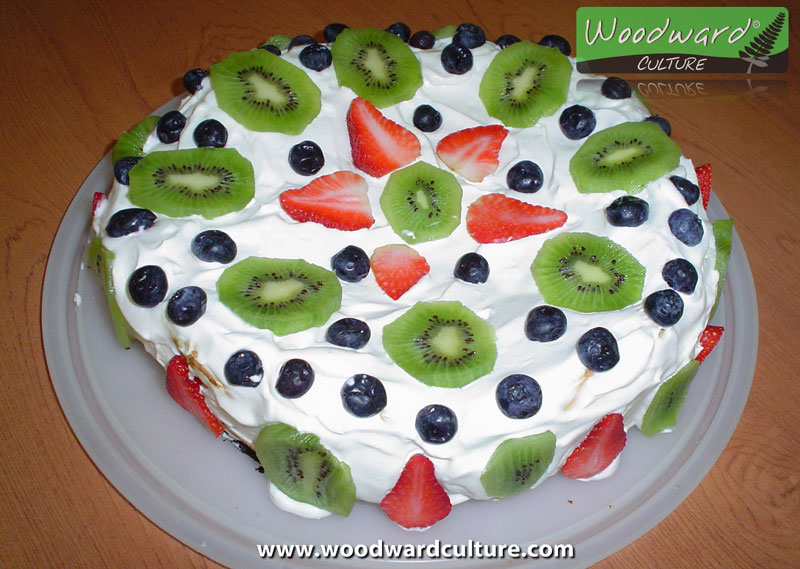
New Zealand is an island nation with its waters containing a large variety of fish and seafood. Despite this, until recently shellfish hasn’t played an important part in the diet of New Zealanders. The consumption of fish has traditionally been low as meat has been the main preference for meals. Having said this, fish and seafood has always been significant in the Maori diet and you will notice that the names of many of them are still used today in Maori.
Typical Breakfast in New Zealand
A typical New Zealand breakfast consists of cereal (especially the iconic Weet-bix* for kids) and/or some toast which is accompanied by a cup of coffee, tea or a glass of juice or milk. Sometimes on the weekend there is time for a cooked breakfast. A typical cooked breakfast has scrambled eggs, bacon, cooked tomatoes, mushrooms, hash browns and baked beans. This cooked breakfast can also be bought/eaten at cafés most mornings and is usually called a big breakfast. It’s very easy to want to skip lunch after such a filling breakfast.
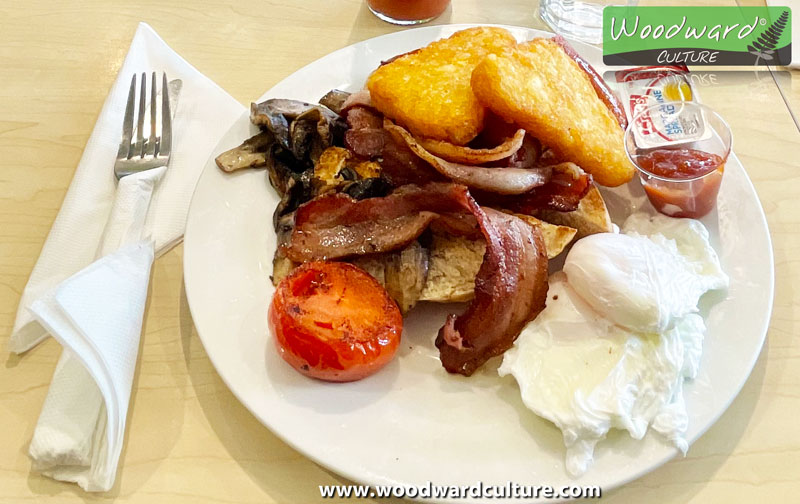
* Weet-bix is made from flakes of wheat compacted into little brick shapes that has been around since 1928. Since the 1985 it has been marketed with the catchphrase “Kiwi Kids are Weet-Bix kids” but since it is originally from Australia, something similar is used there “Aussie Kids are Weet-Bix kids.” Interestingly, it is also considered a national breakfast food in South Africa!
Typical Lunch in New Zealand
Lunch is normally something simple and not too heavy since dinner is the main meal of the day. It is quite common just to have some sandwiches or hot pies for lunch (see more about pies below) though some people enjoy the healthier salads and fruit. Sometimes New Zealanders have a Sunday Lunch with consists of roast beef (or some other meat) and roast potatoes, pumpkins all slowly cooked in the oven. This Sunday lunch is more common in winter.
Typical Dinner in New Zealand
Dinner is the main meal of the day and is eaten around 6pm. A typical dinner in New Zealand can vary based on personal preferences, cultural influences but traditionally includes meat and vegetables.
New Zealand is renowned for its high-quality lamb, and a roast lamb or beef dinner is a classic choice. The meat is often seasoned with herbs and served with roasted vegetables such as potatoes, kumara (sweet potato), carrots, and pumpkin.
When a family can’t be bothered cooking, they may buy takeaways which means buying from a fast-food place. The most traditional takeaway are Fish and Chips.
Fish and Chips
Fish and chips is another typical New Zealand meal (brought over from England) which was originally sold wrapped up in newspaper but nowadays just in a plain paper. They are a great alternative when you don’t want to cook however, they’re not exactly the most healthy alternative since it is all deep fried.
You can buy this meal at Fish & Chip shops, also known locally as Takeaways. For a more local NZ flavour, you can ask for a variety of the local fresh fish (like hoki or snapper) or maybe even a Paua fritter (paua is a type of abalone). You order scoops of chips. For example: “I’ll have two fish and a scoop of chips.” Yes, in New Zealand they are called chips and not fries.
Hot dogs are battered sausages on a stick … NOT a sausage wedged in a bun.
The Fish & Chip shops are always busy on a Friday and Saturday evening and I know of some families that have Friday night Fish & Chips as a tradition … or on the Saturday.
Another tradition I have seen is when family or friends come from overseas, they might have fish and chips at the beach to celebrate as the first meal.
Typical Desserts of New Zealand
The traditional dessert of New Zealand is the pavlova. It is a type of merengue covered in whipped cream then topped with fresh fruit such as kiwifruit (the most common) or strawberries. Why does it have a Russian name? In honour of a Russian ballet dancer who visited New Zealand in 1926. Australia also tries to claim the Pavlova as their traditional dessert but we all know they just copied New Zealand (being from NZ myself, I am totally unbiased … honest!)
Another classic New Zealand dessert is Hokey Pokey ice cream. This is plain vanilla ice cream with small, solid (and crunchy) lumps of honeycomb toffee.
Māori Hangi
The Hangi consists of putting meat and vegetables in baskets and cooking them slowly under the ground. Hot rocks are put in a pit with the food put on top which are then covered with earth so the heat does not escape. After a number of hours the earth is removed and the food is ready. See more details about How to make a Maori hangi. I personally have helped prepare and eaten LOTS of hangi and I can say … the smell, the taste … oh so good! (Photo below of one of the hangi we had)
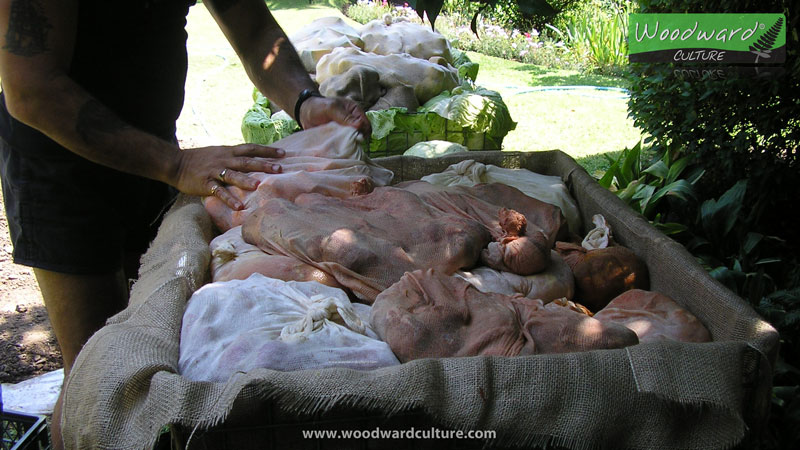
Interestingly, this style of cooking can be found all around the Pacific with slight variations (including Chile where it is called Curanto and consists mainly of seafood as well as the Umu Pae on Easter Island).
Hot Pies
Hot pies are a small pastry with a filling of meat, often eaten as a snack or at lunchtime. You can get them at every bakery in New Zealand.
The most typically pies are mince, mince and cheese, bacon and egg and steak pies. However, now you will find a variety of gourmet pies including lamb, kumara (a local sweet potato) and other interesting ingredients.
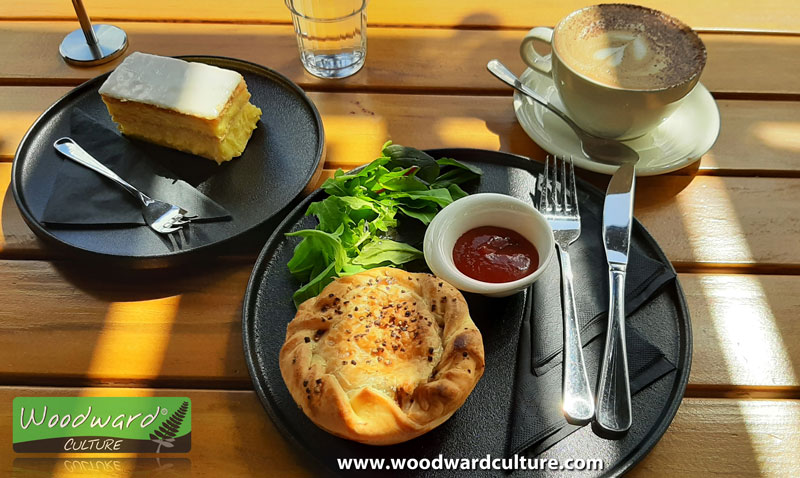
Sausage Rolls
This is a type of sausage meat wrapped in pastry. These are typical snacks at children’s birthday parties that are cooked in the oven at home. You can usually buy these at a bakery too.
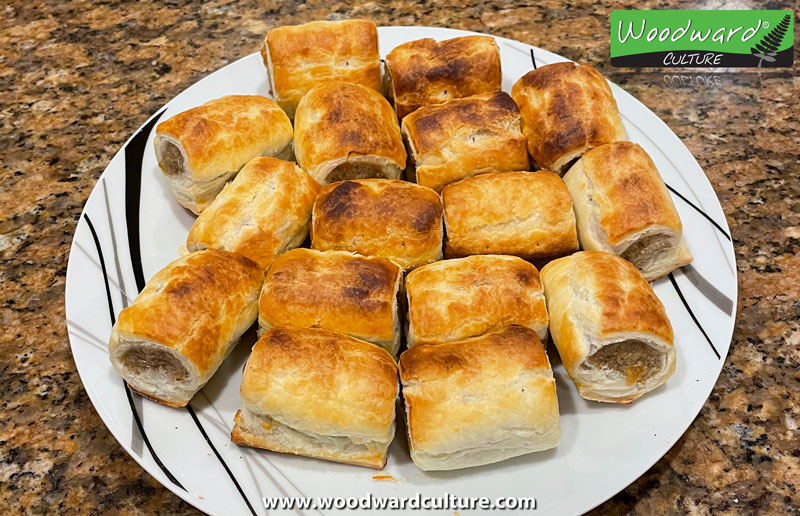
Lollies (Sweets)
In New Zealand candy (or sweets) are called Lollies. Some of the favourite ones are:
Minties: a hard, white and chewy, square mint-flavoured sweet (curiously these are of Australian origin)
Pineapple Lumps: a chocolate coated confectionery with a soft, chewy pineapple-flavoured middle.
Jaffas: a small round sweet with a soft chocolate centre and a thin hard red covering with an orange flavour.
